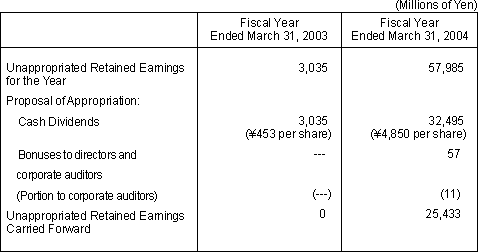It actually transfers the company’s general reserves into share capital. General Reserves comprise the share premium which the company receives from the shareholders. Generally, a company gives two kinds of dividends to its shareholders – cash dividends and stock dividends. A cash dividend is one in which https://patrickobrienfoundation.org/attorney-general-declares-war-on-cyber-criminals/ the company distributes a definite amount of money to each shareholder for each share owned. On the other hand, a stock dividend is obtained from distributable equity in the form of stock. The good news is that, by undergoing a stock split, a company greatly reduces the per-share price of its stock.
Investing implications
Despite legitimate enthusiasm over Nvidia and its stock, excitement over its 10-for-1 stock split (which occurred on June 7) is misplaced. Shares have surged more than 20% as of June 3 since the company announced impressive first-quarter results and the stock split on May 22. Nvidia’s stock performance is exciting because the underlying business is exciting. Over the years, Nvidia grew from a specialist in gaming chips to one that’s now getting most of its revenue from its data center technology.
The 3 Most Undervalued Software Stocks to Buy in June 2024
- The company is reporting blockbuster growth in revenue and profit and remains ahead of the competition in the fast-growing market for AI GPUs and related hardware.
- For example, if you own 50 shares in a company that completes a 2-for-1 split, you’ll be issued 50 additional shares.
- As noted above, a stock dividend increases the number of shares while also decreasing the share price.
- The $10 billion its board authorized for buybacks could reduce Lam’s outstanding share count by more than 8% if fully executed at the current share price of nearly $923.
- Its recent price-to-sales ratio of 36, for example, is well above its five-year average of 19.
Thus, it takes only $6,000 rather than $24,000 to purchase 100 shares. A 3-for-1 stock split means that for every share an investor has, they will now have three shares. The combined value of those three shares would equal the value of http://mainfun.ru/tag/%D1%80%D0%B8%D0%B5%D0%BB%D1%82%D0%BE%D1%80/ what one share used to be. For example, if a stock was valued at $15 and there was a 3-for-1 split, each share would now be worth $5. If the issue of a stock dividend is excessive and remains unchecked, the stock price will be diluted.
Nvidia stock price
It would also add another $840 billion to Nvidia’s valuation and lift its market cap to about $3.7 trillion. If you don’t know a lot about the semiconductor giant Nvidia (NVDA 0.75%), it’s worth learning, because the company has been a huge success lately in the field of artificial intelligence (AI). Nvidia is often in the news, and most recently that’s due to a 10-for-1 stock split, which got many investors excited. Since stock splits are purely mechanical, they aren’t a reason for you to buy or sell a particular stock — and that means they aren’t known to prompt stock gains or declines. Still, it’s interesting to take a look at a stock’s path following a split, and now is the perfect time to look back at Nvidia’s performance after its past few splits. While a large stock dividend has the same purpose as a stock split, it is more easily executed than a split when there is a sufficient number of authorized and unissued shares.
Why might a company decide to do a stock split?
- That makes sense since prices need to go up in order for a company to decide to split its shares.
- Companies completing forward splits are typically out-innovating and out-executing their competition.
- Active listings show increasing home prices owing to low housing availability.
- Stock dividends and stock splits affect the number of common shares outstanding, which in turn influences the earnings per share (EPS) calculation.
- For current holders, it’s good to hold more shares of a company but the value doesn’t change.
Thus, while a stock split increases the number of outstanding shares and proportionally lowers the share price, the company’s market capitalization remains unchanged. The primary distinction between a stock dividend and a stock split is the reason for which they are issued, as both produce similar results. Stock dividends are a good choice for short-term cash flow constraints, but many investors prefer the consistent income that only cash dividends can give. Both Stock Dividend and Stock Split are words used to describe corporate actions. The goals of both stock dividends and stock splits are completely different.
In other words, a cash dividend allows a company to maintain its current cash position. Of course, this does not mean a stock will rise after a stock split announcement or when it goes into effect. Remember, a stock split in and of itself does not impact your holdings’ value.
If an investor owns 10,000 shares, the investor would receive $2,500 as a cash dividend. Every corporation has the same goal in mind—to maximize shareholder wealth. This goal is fulfilled in either of two ways, by reinvesting cash into the business to stimulate its growth or by paying dividends to shareholders. If an organization is short of cash, it can certainly go for a stock dividend declaration.
Oppositely, Stock Split is another action which the company takes, in which the number of shares held by a shareholder gets multiplied. In this, what exactly happens is that the company does not issue any shares, rather the outstanding shares are split or divided into a definite ratio. But splits tend to emerge at a point of strength https://www.travel-sites.org/how-to-check-out-of-a-hotel/ rather than weakness, and that seems to apply to Nvidia right now. The company is reporting blockbuster growth in revenue and profit and remains ahead of the competition in the fast-growing market for AI GPUs and related hardware. There was also a high degree of variability among the results of the stocks that were split.











